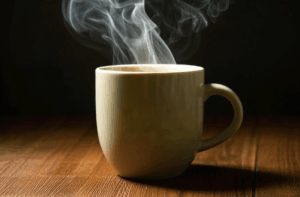Understanding Melamine Mugs for Hot Drinks
Melamine mugs have long gained popularity in commercial and domestic settings due to their durability, aesthetic appeal, and affordability. Made from melamine-formaldehyde resin, these mugs offer a lightweight and shatter-resistant alternative to traditional ceramic or glass drinkware. However, concerns persist regarding their safety when used for hot beverages.
To assess whether melamine mugs safe for hot drinks are truly safe, it is essential to examine their chemical composition, temperature tolerance, regulatory guidelines, and real-world performance.
What Is Melamine Resin?
Melamine resin is a thermosetting plastic created by polymerizing melamine and formaldehyde. The final product is hard, glossy, and heat-resistant to a degree. However, melamine resin is not the same as inert plastic — under certain conditions, particularly with prolonged exposure to high temperatures, it can leach small amounts of melamine or formaldehyde into food or drink.
Temperature Limits of Melamine Mugs for Hot Drinks
Thermal Resistance Profile
Melamine mugs are typically safe for use with liquids up to approximately 70–80°C (158–176°F). At higher temperatures, the risk of chemical migration increases, particularly if the material is degraded or of poor quality.
A 2013 study published in the Journal of Agricultural and Food Chemistry demonstrated that melamine could migrate into food or drinks at temperatures above 90°C (194°F), particularly under acidic conditions — a critical consideration for users who frequently consume tea, coffee, or citrus-based drinks.
Practical Use Guidelines
- Do not use melamine mugs in the microwave, as this can accelerate material degradation.
- Avoid exposing mugs to boiling water (~100°C or 212°F).
- For the safest experience, use melamine mugs for warm — but not boiling — beverages.
Regulatory Standards and Global Safety Assessments
Authorities around the world have weighed in on melamine safety. Their conclusions provide some reassurance, provided that the mugs are used appropriately.
Safety Limits on Migration
- The European Union stipulates a maximum specific migration limit (SML) of 2.5 mg of melamine per kg of food.
- The U.S. Food and Drug Administration (FDA) deems melamine resin items safe if not used in the microwave or with extremely hot food.
Independent testing agencies, such as TÜV Rheinland and SGS, routinely test tableware for compliance with these standards, especially for products meant for export.
Test Results from Real Samples
An analysis conducted by consumer safety authorities in Germany (2011) showed that only 3 out of 47 tested melamine tableware products exceeded the migration limits. The rest stayed within safety thresholds when used correctly, suggesting that product quality plays a decisive role.

Advantages of Melamine Mugs for Hot Drinks
Despite the thermal limitations, melamine mugs offer practical benefits for specific commercial environments.
Operational Benefits
- Impact Resistance: Melamine’s sturdy structure significantly reduces breakage in high-traffic settings like cafeterias and hospitals.
- Light Weight: Easier to handle for children, elderly, or individuals with reduced grip strength.
- Design Flexibility: Allows for custom branding, vibrant colors, and scratch-resistant prints.
Economic and Environmental Value
- Lower energy and production costs compared to ceramics or metal.
- Longer life span than disposable paper cups, reducing waste in the long run.
These advantages make melamine a popular choice in institutional foodservice and airline catering.
Risks and Mitigation Strategies
Melamine mugs do present manageable risks when used with hot drinks. Here’s how to mitigate them:
Identify High-Risk Scenarios
- Pouring boiling water directly into melamine mugs.
- Using acidic hot beverages (like lemon tea) in them.
- Repeated heating in microwaves or ovens.
- Scratched or worn-out surfaces accelerate leaching.
Mitigation Guidelines for Foodservice Operators
- Use stainless steel or ceramic for drinks over 80°C.
- Replace mugs that show signs of wear or discoloration.
- Inform kitchen staff about proper use and limitations.
- Purchase only certified melamine products that comply with ISO 6486 or equivalent standards.
Alternatives to Melamine in High-Heat Environments
For settings where high heat is unavoidable, such as boiling water or espresso service, melamine may not be the optimal material. In such scenarios, consider:
- Porcelain or Stoneware: Naturally resistant to high heat and microwave safe.
- Double-walled Borosilicate Glass: Offers thermal insulation and transparency.
- Stainless Steel Mugs: Durable, non-leaching, and retain heat well.
These alternatives may come at higher initial costs but offer peace of mind and long-term durability.
Future Perspectives and Industry Innovation
Material Improvements
Recent innovations are focusing on melamine blends with improved resistance to heat and lower formaldehyde content. Nanocomposite additives may increase performance while maintaining affordability.
Transparent Labeling and Certification
As consumers grow more safety-conscious, transparent labeling — such as maximum temperature indicators — will become an industry differentiator. Third-party certifications may also serve as quality assurance tools.
Conclusion
Melamine mugs for hot drinks are generally safe if used within their intended temperature range and for non-acidic beverages. They are not suitable for boiling liquids or microwave use, but they remain a strong contender in environments requiring durability and cost-efficiency.
